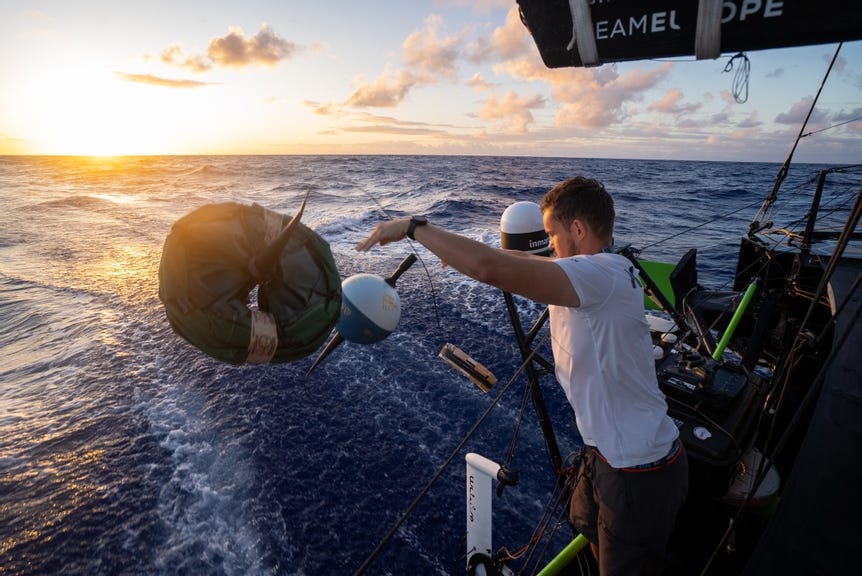Sport and tourism need to team up – to understand and support the ecosystems they rely on
Sustainability strategy and insight for sport
Once you notice something for the first time, you start seeing it everywhere.
Since we published our newsletter on sport and regenerative tourism last week, I’ve spotted several interesting examples where sport, tourism partnerships and sustainability intersect.
(You can catch our interview with Ana Agostinho on the topic here 👇)
Now, sport and tourism have always gone hand in hand. A big chunk of tourism is sport-related – whether it’s travelling to play sport or to watch it.
But what I’m seeing now are partnerships that go beyond just attracting visitors. These ones have broader sustainability ambitions built in. And interestingly, they’re mostly coming from the luxury tourism sector.
Last week, I was lucky enough to attend race three of E1’s second season in Dubrovnik, quite possibly one of the most stunning places I’ve ever been.
The day before the event, the electric powerboat racing series hosted the Natural Capital Summit. It opened my eyes to even more potential for how sport can drive regeneration and sustainability, but more on that in a newsletter next month.
The race itself was presented by Adriatic Luxury Hotels, a group of five-star hotels in Dubrovnik, with the Hotel Excelsior acting as the main hub on race day. E1 is a new and glamorous sport, with celebrity team owners and dramatic coastal scenery, so it’s no surprise the demographic overlaps with the type of clientele Adriatic Luxury Hotels wants to attract.
But what stood out was a point made during a sustainability-themed session before the racing. David Taylor, CEO of Adriatic Luxury Hotels, emphasised how important E1’s focus on coastal regeneration and sustainability was to the partnership.
Now, sometimes these claims can feel a little hollow. Shared values in public, different priorities in private. But in this case, I believe it. For a brand like Adriatic Luxury Hotels, the value of the business is directly tied to the health of the local environment. If Dubrovnik’s beaches were trashed or the waters polluted, the entire proposition would fall apart.
A similar example: AMAALA, a luxury tourism destination on the Red Sea, has gone all in with The Ocean Race. It’s launched a team, will host the 2027 season finish and, most interestingly for me, is now the lead partner of the race’s Science Programme.
Boats will carry sensors to track ocean health: temperature, salinity, oxygen and CO2 levels, microplastics and eDNA, and AMAALA plans to transform that data into “breathtaking, immersive visualisations”, turning science into storytelling.
It’s a strong example of tourism investing in both sport and science in a way that creates mutual benefit.
It’s also a lesson. Tourism seems to have understood something that sport hasn’t fully caught onto yet: that investing in nature can deliver a return. At the Natural Capital Summit, we heard about emerging investment products that offer financial returns while funding conservation and regeneration.
And yet, we’re still in a paradox. The value of nature is both obvious and unquantified. If nature collapses in a given place, sports events can’t happen there and the value disappears. But we haven’t yet measured that loss properly.
One project I’m involved with, BENCHES, is starting to explore this. It’s an EU-funded initiative focused on biodiversity and sport. Researchers at Sant’Anna School of Advanced Studies recently looked at how much athletes value nature.
They asked athletes in canoeing and mountain running how much they’d be willing to pay to preserve the natural environments they use. On average, canoeists said €160, and mountain runners €110, giving a rough ecosystem value of over €720k for freshwater sites and just under €630k for mountainous ones.
You can find out more in a webinar we hosted here.
But maybe it’s not just athletes we should be asking.
What’s the value of nature to a rights holder like E1, when they choose Dubrovnik as a host city? What’s it worth to Adriatic Luxury Hotels or AMAALA – not just in brand terms, but in securing world-class sports events?
That’s the question we need to be asking.
And perhaps it’s time for sport and tourism to team up more deliberately; to understand, measure and ultimately support the ecosystems that underpin their shared success.





